10 Common Examples of Convection (with pictures)
Written by Stanley Udegbunam || Dec 10, 2020
In today’s article, we will be looking at 10 different examples of convection with pictures and detailed explanations.
We will start by having a quick overview just to remind ourselves of what convections actually means, then proceed afterwards.
AFRILCATE
OVERVIEW OF CONVECTION
Convection is a process of heat transfer that involves the physical transport of bulk matter from one point to another.
It is one of the three modes of heat transfer, the others been conduction and radiation.
There are two types of convection: Natural convection and Forced convection.
Unlike conduction, convection requires macroscopic movement of matter.
As a result of this, convective heat transfer only occurs through liquid and gases.
Heat transfer is only possible when temperature difference between the two fluids exchanging heat.
When a surface is exposed to ambient air at different temperature, convection heat transfer takes place between the surface and the ambient air.
The heat flow rate from surface to ambient air is governed by Newton’s Law of Cooling.
10 EXAMPLES OF CONVECTION
Listed below are 10 common examples of convection in everyday life.
- Boiling Water
- Land and Sea Breeze
- Air Conditioner
- Body blood circulation
- Melting of chilled drinks
- Convection Oven
- Hot-air Baloon
- Refrigerator
- Car Radiators
- Defrosting frozen meat
DETAILED EXPLANATION OF THE CONVECTION EXAMPLES
1. Boiling Water
This is the most common and relatable household example of convection.
For instance,
When water is heated in a kettle, thermal expansion takes place.
The lower layer of the water which is hotter becomes less dense and moves upward due to buoyancy.
The cooler/upper layer of the water falls below and gets heated as well.
The process is repeated until the entire water in the kettle is heated up.

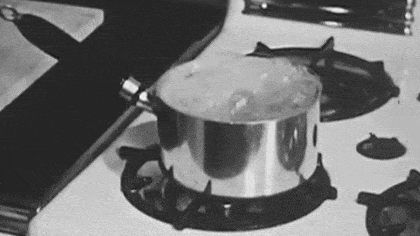
2. Land and Sea Breeze
This type of convection occurs naturally, it’s either called natural convection or free convection.
In the daytime, the land surface is heated up making it warmer than a nearby sea.
The heated air molecule moves up and it’s replaced by cooler air from the sea resulting in what we call “Sea Breeze.”
This repetitive circular motion creates a convective current.
At night, the reverse is the case. The air above the sea is warmer compared to that of the land.
As a result of convection, the warm air from the sea rises and is replaced by the cooler air from the land resulting in what we term also as “Land Breeze.”
Now the question is…
Why is land and sea breeze called natural convection?
Land and sea breeze is called natural convection because convective current moves air molecules across the land and sea intermittently depending on their respective temperature difference.
This convective process is a natural process completely devoid of any form of human intervention.
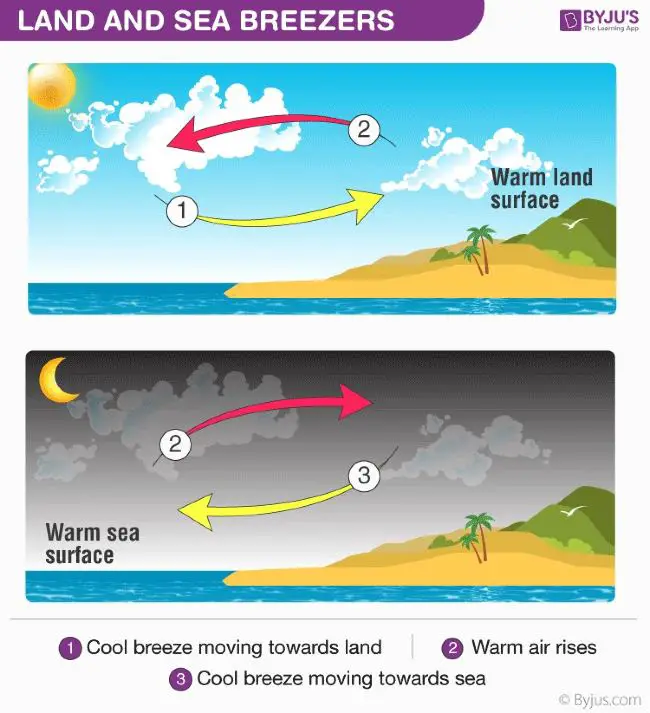
3. Air Conditioner
Most of you can’t do without the air-conditioners or high blowing electric fans during the hot summer season. (actually referring to myself😉).
Air conditioner cools the room or containing structure through the same principle of convection.
When turned on, it releases cool air.
This released air falls below the warm air and quickly fills up the room because it’s denser.
The warm air, which is less dense rises above the cool air and it’s sucked into the compressor of the air-conditioner.
The continuous sucking out of warm air while filling the room with cooler air sets up a convection current.
The human body continually produces warm air as well as on-going activities in the room.
As long as the air conditioner is turned on, this warm air will always be replaced by cool air.
4. Body Blood Circulation
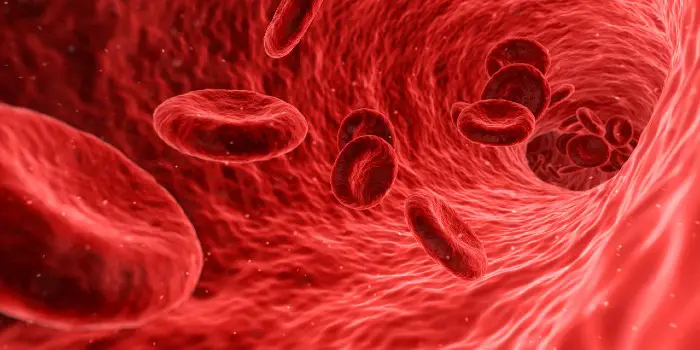
You are probably wondering what’s the relationship between convection and blood circulation, right?…
Yeah, convection do occur in the human heart in order to regulate body temperature.
Although the heart is a single organ, it acts as a double pump.
The first pump carries oxygen-poor blood to your lungs, where it unloads carbon dioxide and picks up oxygen. It then delivers oxygen-rich blood back to your heart.
The second pump delivers the oxygen-rich blood to every part of your body.
Inother words, the heart serves as a pump that delivers blood to different parts of the human body through forced convection.
Forced convection is a type of convection that involves fluid flow under the action of driving forces like pressure.
In forced convection, the fluid is “forced” to flow over a surface or in a tube by external means such as pumps or fans.
The heart is the best example of forced convection in our body.
5. Melting of Chilled Drink
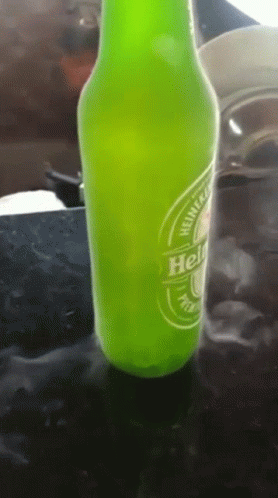
If you take an ice-cold drink like this gorgeous beer here, away from the chiller and expose it to the ambient air, it will defrost with time.
This is because the temperature of the bottle surface increases as warm air blows over it.
Since a convection current is set, the temperature of the bottle surface is gradually altered and the chilled drink melts.
After a long time, it will be at the same temperature with the environment.
6. Convection Oven
Convection oven is quite different from the regular oven.
The regular oven (common in houses) conducts heat through conduction directly from the oven heater to the oven rack.
But in a convection oven, the heat is evenly dispersed by fans inside the oven.
The heated air in the oven expands and rises and the cool air falls low and it’s heated as well.
For baking purposes, the convection oven is preferred to the regular oven type because:
the convective process set up in the oven thoroughly cooks the food accross all sides giving you an evenly cooked cake or mouth-watering steak.
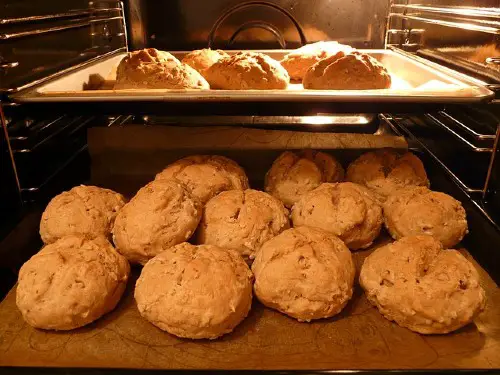
7. Hot Air Baloon
Hot air balloons use the same principle of convection.
A heat source at the bottom of the balloon heats the air molecules around the flame, causing them to move upwards.
The hot air which moves upward gets trapped inside the balloon, causing the balloon to rise up too.
The cool air is pushed downward, where it is also heated and it rises too to further push the balloon upward.
Through this convection process, the balloon keeps moving in the upward direction.
To land the hot air balloon, a large mass of hot air is released.
By so doing, cool air replaces the hot air and the balloon lowers gradually until it reaches ground level.

hot-air ballooning
8. Refrigerator
Another common example of convection heat transfer is the household refrigerator.
The process by which a refrigerator removes heat from the refrigeration compartments relies on the concept of convection.
In refrigerators, convection occurs through the use of refrigerant gases and compressor.
The convection oven mentioned above uses circulating air to help speed up the process of cooking food.
Refrigerators use copper tubes filled with refrigerant coolants to produce the cooling effect required for food preservation.
9. Car Radiators
A motor radiator is a mechanical device that cools the hot liquid circulating through the block of an internal combustion engine.
In automobile, this liquid is called coolant.
Hot coolant finds its way to the radiator through radiator tubes. Cool air from the environment also passes through the fins of the radiator as you drive.
The cool air passing through the radiator fins helps cools the hot coolant.
The temperature of the coolant drops gradually after which it runs through the engine again to pick up more heat and travels back to the radiator.
The heat is transferred from the hot coolant to the cool air through convection and the process continues.
It’s important to note that the nearby heated air is transmitted to the environment through radiation.
So, we can identify two modes of heat transfer around a radiator, convection and radiation.
Convection transfers the heat from the coolant to the surrounding air through the radiator fins,
while radiation transmits the heated surrounding air to the environment.
This brings us to another important question.
Since this mechanical device involves two modes of heat transfer (convection and radiation), why are they called car radiators instead of car convectors?
Well, it is called radiators instead of convectors, because of the fins surrounding the mechanical device.
Mechanical fins are extended surfaces that enhance radiation heat transfer, simply by increasing the surface area of the device.
Heat lost through car radiators is a forced type of convection.
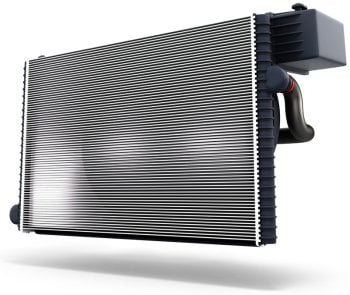
car radiator
10. Defrosting Frozen meat
What is the most annoying challenge you’ve encountered while cooking?
For me, I’ll say it’s forgetting to take off frozen meat or fish from the freezer few hours before cooking.
The process of defrosting frozen food is called thawing.
We can achieve thawing in two ways:
- leaving it in open-air – this can take up to 10 – 15 hours depending on how frozen the meat is.
- Placing it under a running tap – this is quicker and defrosts the meat in 11-20 minutes.
Both options utilize the principle of convection to achieve thawing.
For the case of running tap, thawing is faster because the continuous downpour of water will lead to a faster heat transfer.
If the water is warm or hot, then the time spent in defrosting will reduce.
Inorder words, the higher the water temperature, the more heat is transferred through convection and the faster the thawing.



thankl you this is the best infoanbouut radiationn ever evre vervevr thanks again
Can you please allow me to do some lessons with you through online